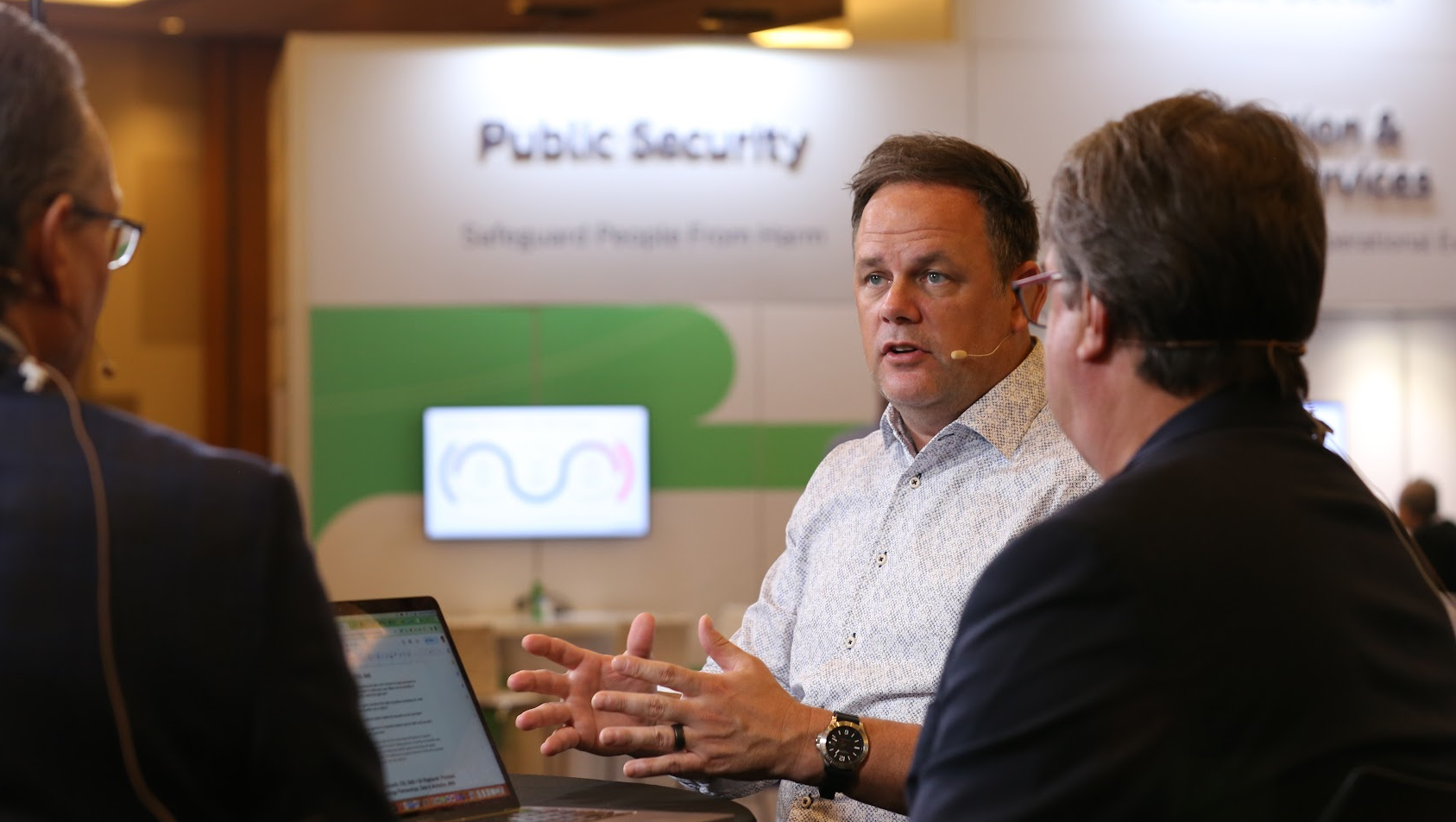 AI
AI
 AI
AI
 AI
AI
Major advancements in generative artificial intelligence and expanding use cases were just part of the agenda at SAS Institute Inc.’s SAS Innovate gathering in Las Vegas last week.
The data analytics provider outlined its vision for industry-specific AI integration and enhanced decision-making, driven by new AI models and partnerships. Companies around the globe are seeking to harness the power of AI and the discussion at SAS Innovate centered around how to leverage the fast-moving technology to solve problems and realize tangible business results.

At SAS Innovate, theCUBE analysts discuss advancements in gen AI.
“It’s consistently solving the quality problems,” said John Furrier, executive analyst of theCUBE Research, during an analysis of the keynote presentations on the conference’s first day. “What we see with stored prompts is that directional power law, specialty models — that we published over a year ago — coming to fruition, and the value’s going to be in using other things (stored prompts, other modules) to make the data better so that the ultimate decision and the response, whether it’s reasoning or an outcome, is key.”
During the event, analysts for theCUBE, SiliconANGLE Media’s livestreaming studio, spoke with industry experts about the transformative impact of AI on data analytics and the contributions of SAS to the field. (* Disclosure below.)
Here’s theCUBE’s complete keynote analysis:
Here are three key insights you might have missed during the event:
When SAS increased development features in its Viya AI and analytics platform last year, the company positioned the offering as a powerful platform for integrating the world’s most robust large language models. SAS provided additional new elements for Viya last week, with the introduction of a new synthetic generator called SAS Data Maker and a developer platform branded as Viya Workbench.
“At some point, you’ve got to integrate all of the tech, and what you’re really getting is you’re making a final decision to give a response back to the user,” said Bryan Harris (pictured), chief technology officer of SAS, during an interview with theCUBE. “There’s very, very challenging integration and expectations of responses from generative AI workflows that we have to get done. For us, Viya sits at the center of that. We can augment prompts, we can orchestrate against other traditional models … and bring the data back in so that the LLM can reason over that and send back the response to the user.”
Here’s theCUBE’s complete video interview with Bryan Harris, who was joined by Marinela Profi, global product marketing strategy lead for AI and generative AI at SAS:
SAS Viya is finding a place in vertical use cases. One customer featured during the event’s keynote presentations was pulp and paper manufacturer Georgia-Pacific LLC, which relies on Viya to reduce downtime, improve equipment efficiency and optimize shipping logistics by leveraging high-performance AI models from robust streaming data.
“Viya, as well as integration with … that event streaming protocol, has been incredibly important to our manufacturing vertical,” said Jay Upchurch, chief information officer of SAS, in an appearance on theCUBE. “Those two things together initiated so much of where Georgia-Pacific was going. We’re meeting our customers where they want to be.”
Here’s theCUBE’s complete video interview with Jay Upchurch, who was joined by Sri Raghavan, principal of data science and analytics, Amazon Marketplace, at Amazon Web Services Inc.:
Industry analysts are taking note of Viya’s impact in the enterprise marketplace. For what has been traditionally viewed as a legacy analytics company, SAS is now leveraging nearly 50 years of expertise to simplify AI applications for its customers.
“They’ve got to show the subscription revenue growth as they’re going from on-prem to cloud, which is one of the big challenges,” said Ray Wang, founder and principal analyst of Constellation Research Inc., during a Day 2 analysis at the SAS Innovate event. “But they’ve actually been showing growth with Viya. We were at their SAS Analyst Day a couple of months back, and I can tell you, it’s a very, very different SAS here than what would be even three years ago.”
Here’s theCUBE’s complete video interview with Ray Wang, who was joined by theCUBE Research analysts:
An explosion of AI use cases has been accompanied by initiatives to provide a governance framework for the technology. One of these is the National AI Advisory Committee, a 25-member group with the charter to advise the President of the United States on recommendations to limit the risks associated with AI use.
As a member of the NAIAC, Reggie Townsend, vice president of data ethics at SAS, told theCUBE that some amount of regulation will be necessary to ensure that AI is responsibly handled.
“It’s not like with AI we’re lawless here,” Townsend said. “There’s a lot of laws that exist today that are already regulating AI. I think what people are really afraid of is whether or not they will have permission to just run roughshod and do whatever the heck they want to do. ‘No’ is the answer to that.”
Here’s theCUBE’s complete video interview with Reggie Townsend, who was joined by Miriam Vogel, president and chief executive officer of EqualAI:
A key aspect of AI governance involves responsibility for how data is obtained and managed. Marketing practitioners are having to adjust to a new reality in which third-party cookies, files installed in user devices to gather information about browsing habits, are being phased out by major digital platforms such as Google LLC. This will likely lead to a move toward closer management of first-party data, which may generate improved marketing results.
“What you’re seeing now is some of those brands respond and say, ‘We could monetize our own first-party data,’” said Mike Blanchard, vice president of customer intelligence at SAS, during an appearance on theCUBE. “They’ll be able to build better products, better services, better communications. Those that understand their customers better … will win.”
Here’s theCUBE’s complete video interview with Mike Blanchard, who was joined by Regan Yan, chief executive officer of Digital Alchemy Ltd.:
Responsible handling of data and AI is becoming linked with another important initiative: sustainability. The hardware required to process mountains of data for generative AI uses more power, and there is growing pressure to reduce the carbon footprint and slash energy costs.
SAS has responded to this need with advanced technology solutions, including Energy Cost Optimization that merges internet of things and process data.
“We’re starting to see exponential interest around sustainability, and the goal is to leverage this vast network of sensors that are in place and then apply that to the efforts to reduce power consumption,” according to Jason Mann, vice president of IoT at SAS, during an interview with theCUBE. “Energy Cost Optimization is focused primarily in providing insight to the energy utilization across the processes within the company.”
Here’s theCUBE’s complete video interview with Jason Mann:
Enterprises are focused on using generative AI to provide the right experience for customers across a wide range of verticals. This was a clear message from the many executives interviewed by theCUBE over two days. For cloud giant AWS, this means shortening the distance between data and analytics value through tools such as Customer 360 to provide a holistic client view.
“With Customer 360, we’re providing support with generative AI to be able to deliver content, which then SAS takes and passes it on to customers who are now able to have a very, very near real-time experience … with their retailers or with their healthcare providers or their banks,” said Sri Raghavan, principal of data science and analytics, Amazon Marketplace at AWS, during an appearance on theCUBE. “This is a classic example of two technologies coming into play.”
Here’s theCUBE’s complete video interview with Sri Raghavan, who was joined by Jay Upchurch, chief information officer of SAS:
For banks, the use of AI is already having an impact in a number of different areas, even though these may not all be readily apparent to customers. As Long Jiang, assistant vice president of fraud analytics and strategy at Credit One Bank N.A., told research analysts on theCUBE, AI is helping financial institutions in critical areas such as fraud prevention.
“From the credit card side of things … we have migrated over to a new fraud detection engine strategy application,” Jiang said. “What it allows us to do is be able to create additional custom profiles, whether it is based on the merchant level or whether it’s based on the personnel or our customer’s level. It really translates now into your customers.”
Here’s theCUBE’s complete video interview with Long Jiang, who was joined by Stu Bradley, senior vice president of risk, fraud and compliance solutions at SAS:
At Microsoft Corp., updates in November to its Azure cloud computing platform included its Fabric framework for integrating data assets with AI operations. SAS Decision Builder has been brought into Fabric to create a unified analytics solution for a wide range of use cases, including loan approvals and personalized digital marketing.
“The game has changed,” said Dipti Borkar, vice president and general manager of Fabric strategic ISVs, Azure Databricks and app development at Microsoft, during her appearance on theCUBE. “The number of capabilities that you can build today in days, not years, with generative AI and with the tools we have today is just phenomenal.”
Here’s theCUBE’s complete video interview with Dipti Borkar, who was joined by Gavin Day, executive vice president, office of the CEO, at SAS:
To watch more of theCUBE’s coverage of SAS Innovate 2024, here’s our complete event video playlist:
(* Disclosure: TheCUBE is a paid media partner for SAS Innovate. No sponsors have editorial control over content on theCUBE or SiliconANGLE.)
THANK YOU